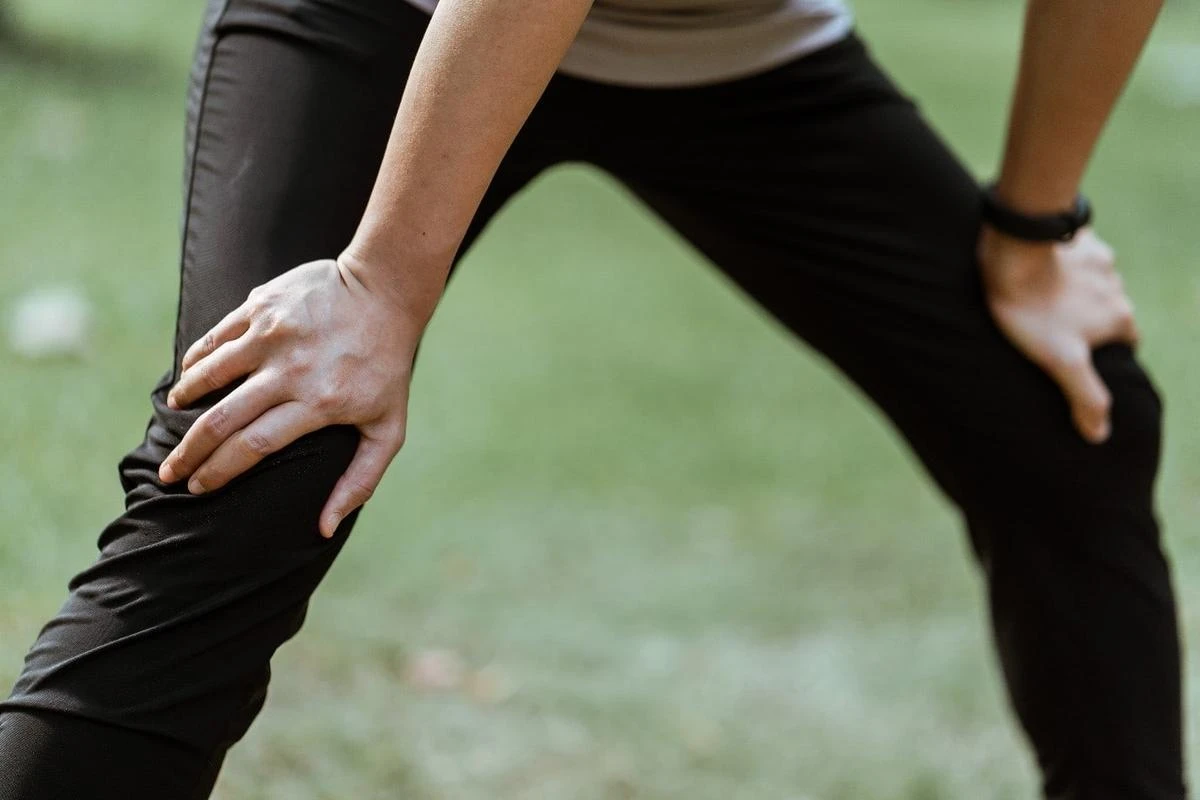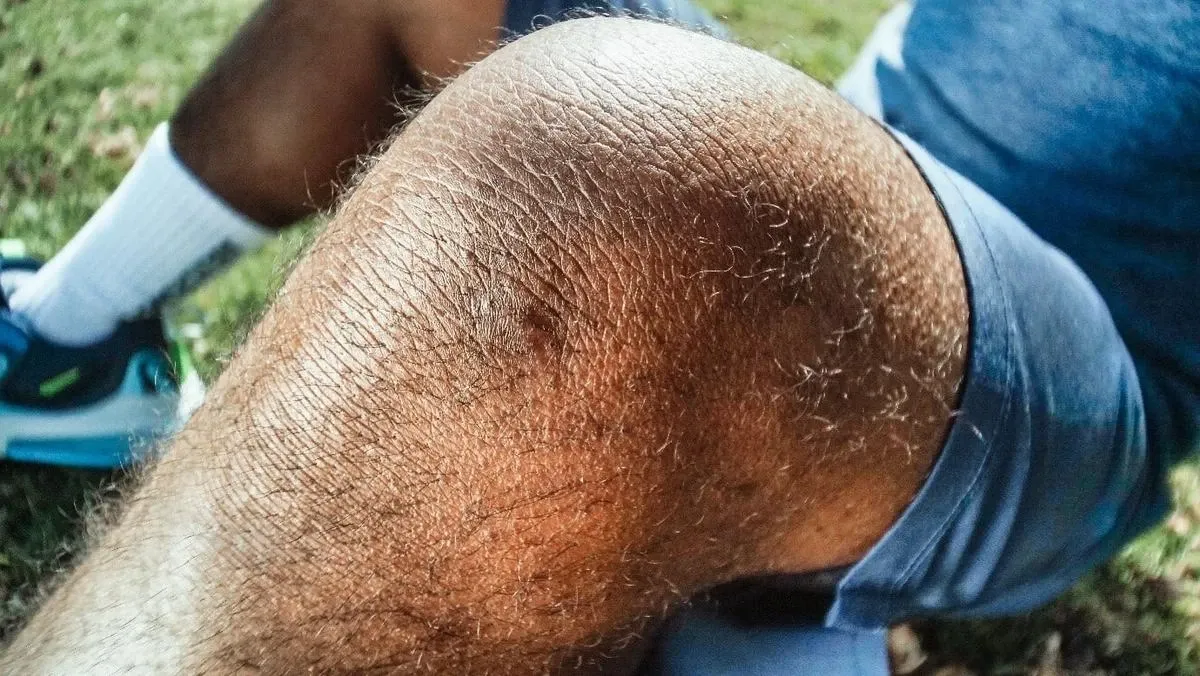Experiencing severe pain in your knee joint? Read on and find out more about the potential causes of knee pain.
What actually causes knee pain? There are, as you might imagine, a host of different problems. Fluid filled swelling, knee locks, ligament injuries, impediments to blood flow, knee buckles, why, there’s a whole world of unfortunate knee issues to contend with. Some constitute a medical emergency, while others can be treated with simple physical therapy.
Severe knee pain can be caused by a knock or a blow that has damaged the knee joint. But, alternately, knee pain may be due to something like knee arthritis. The pain might be temporary, it might last more than a day, or it may be the symptom of a chronic disease.
In this article, we’re going to look at some of the causes of knee pain.
Then, after we’ve looked at those causes, we’ll look at some effective treatments for increasing mobility and to relieve pain in the knees.
With the right help, people who have painful knees can get back to living a healthier, happier life. Read on, and discover more about knee pain, its causes, and potential treatments.
How common is knee pain?
Knee pain is a very common kind of joint pain. It can impact people from all walks of life, of different ages, with different levels of activity.
From a young person with a sedentary lifestyle to an active older person and everybody in between, all sorts of people present to physiotherapists and sports medicine experts seeking to relieve chronic knee pain.
Symptoms might range from mild discomfort to intense pain, and treatments can include things like:
• Knee braces
• Losing weight
• Repeated pressure
• Strengthening exercises
• Keeping the knee raised
• Advising the patient to avoid putting weight on the knee
What causes knee injuries and knee problems?
Although there are many different causes of knee pain, the most common knee problems are related to things like:
Ageing can impact the knee and increase the chances of knee injury
The knee is under an enormous amount of stress on a day-to-day basis. Every step puts pressure on the knee, around 1.5x your bodyweight. As people get older, this takes a toll.
The body’s ligaments and muscles tend to get weaker over time, but the knees are especially prone to ageing.
There’s a kind of ‘shock absorber’ on the knee; they’re called ‘menisci’ and they’re pad of knee cartilage that absorb impact when we walk or run. The knee’s menisci deteriorate over time.
Pain is a common symptom of this kind of knee osteoarthritis. Also, since the ligaments and muscles of the knee progressively get weaker, injuries start to become more likely or severe.
Often, knee pain is caused by injury or repeated stress
Over the course of a season, every football team seems to come down with at least one (but often many more) player who suffers a sad and debilitating knee problem. The knee is a complicated bit of machinery, with many risk factors at play.
Injury can trigger knee problems and medical conditions. This can cause pain to the knee joint, with possible issues like cartilage tears, strained ligaments, and tendonitis.
Knee related issues like torn cartilage, meniscus tear and ACL injury are some of the most common sports injuries.
Repeated stress can also be the cause of a sore knee. If you’ve started exercising differently, whether undertaking a new technique or increasing the amount or difficulty of the exercises in your fitness regimen, this may be causing knee pain over time.

Can rheumatoid arthritis cause knee pain?
Rheumatoid arthritis can attack multiple joints, including the knees. Thankfully, as with other kinds of arthritis pain, there are options for pain relief.
Unlike many other knee injuries and ailments, rheumatoid arthritis tends to be symmetrical; although there have been cases where it only impacted one side of the body, it almost always can be felt on both joints.
If you’ve started to feel knee pain and stiffness in both knees, and there doesn’t seem to be an injury at the root of it, you may be experiencing rheumatoid arthritis in your knees. This form of arthritis causes the synovial membrane (which covers the joint of the knee) to swell.
There is no cure for RA, but with medication and physiotherapy the progression of the disease can be slowed down and managed.
What is patellofemoral pain syndrome?
Patellofemoral pain syndrome is a condition where cartilage under the kneecap has been damaged, usually because of overuse or injury. It is among the most common forms of knee pain that doctors and physios see.
Sometimes, knee patellofemoral syndrome might be so severe as to be ranked alongside medical emergencies. However, most of the time, this condition just requires rest.

Can flat feet cause knee pain?
Yes, flat feet can cause knee pain. Without getting overly technical, a foot with a flattened arch can cause the leg to twist inwards when taking a step. This adds stress to the knee joint and, over time, it can result in knee pain. Orthotic insoles (arch supports) might help to relieve the pain.
Flat feet are not the only postural issue that can result in a painful knee. Knock-knees, where the knees point at each other, and bow leggedness from high-arched feet (when a person’s knees point outwards) can be a root cause of knee pain.
Flat feet and other postural conditions might not cause the knees to hurt constantly, but they can lead to misalignment of the lower body, and the result might be that knee issues and injuries take longer to heal.
Is there any way to prevent knee pain?
There are many ways to prevent knee pain. If you’re overweight or obese, a physiotherapist will often advise at you lose weight. This will reduce the impact of gravity on your knees and help it to bear weight for a longer period of time.
Other ways to prevent knee pain is to avoid knee injuries, like an ACL injury or torn meniscus.
What should I do if I’m suffering from knee pain?
As tempting as it can be to try and self-diagnose the causes and treatments of an ailment over the internet, the best thing to do when you’re suffering from knee pain is to see a physical therapist.
You don’t need to see a doctor before booking in for a physio, and it’s not at all necessary for you to get a referral first from your primary care doctor, although if you do present to your doctor with knee pain, they may refer you.
Until you see a physio for a physical examination, it is imperative that you refrain from aggravating the condition. For example, keep your knee joints from bearing weight; there’s nothing worse than when minor injuries unnecessarily become more severe.
Take time off work if you can and ask friends and relatives for help. Try not to undertake any activities that accompany knee pain (sports, running, physical labour, and so on).
Make an appointment with an Align Health Collective physiotherapist for a proper examination and prompt diagnosis. From there, we will be able to prescribe the best course of action for you. We will always encourage rehabilitation exercises where possible, though may need to suggest pain management or further action depending on the diagnosis.
Related Posts:
